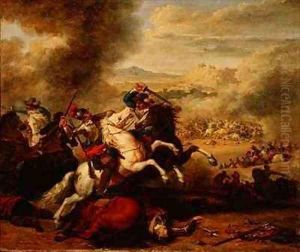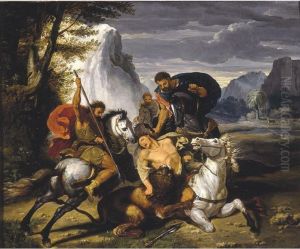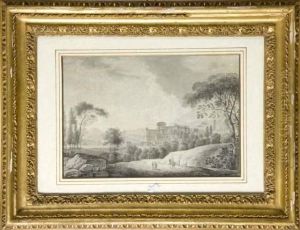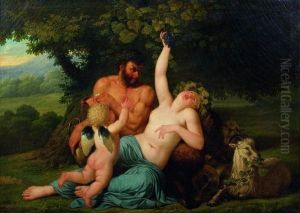Benigne Gagnereaux Paintings
Benigne Gagnereaux was a French artist known for his contributions to the world of painting and drawing during the late 18th century. Born in 1756, Gagnereaux lived through a tumultuous period of French history, which saw the transition from the Ancien Régime through the French Revolution and into the early years of the French Republic. Despite the chaotic backdrop of his lifetime, Gagnereaux managed to carve out a niche for himself in the art world, primarily focusing on landscapes and scenic portrayals, which were highly regarded for their detail, composition, and emotive power.
Gagnereaux's work reflects the broader movements within French art at the time, particularly the influence of Neoclassicism, which sought to revive the idealized forms and themes of ancient Greek and Roman art. His landscapes, often imbued with a sense of tranquility and a delicate balance between humanity and nature, echo the ideals of harmony and order that were central to Neoclassical aesthetics. Despite his alignment with these broader trends, Gagnereaux also exhibited a unique personal style characterized by a keen observation of natural light and shadow, which added depth and realism to his scenes.
Throughout his career, Gagnereaux remained relatively obscure compared to his contemporaries, such as Jacques-Louis David, the leading figure of French Neoclassicism. However, his works were appreciated by connoisseurs and collectors who valued the serene beauty and technical skill evident in his paintings and drawings. Unfortunately, his life and career were cut short when he died in 1795, at the age of 39, amidst the political and social upheavals of post-revolutionary France.
Despite his early death, Gagnereaux's artistic legacy has endured. His works are preserved in various museums and collections, where they continue to be studied and admired for their contribution to the Neoclassical movement and their depiction of 18th-century European landscapes. Through his art, Benigne Gagnereaux offers a window into the complex world of late 18th-century France, capturing the beauty of its landscapes amidst the era's shifting societal and political landscapes.












